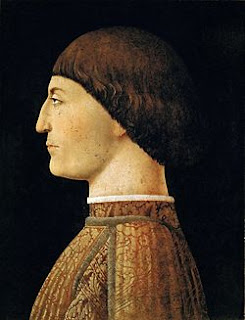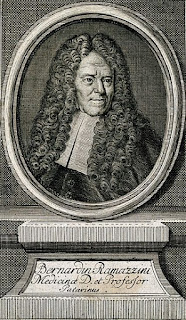Rosalba Carriera - portrait painter
Venetian artist specialised in miniatures
One of the most successful women painters in the history of art, Rosalba Carriera is thought to have been born on this day in 1675 in Venice. A pioneer of the Rococo style, she worked in pastel colours and was best known for her portraits. Her work was so admired that at her peak she had an almost constant stream of commissions from notable visitors to Venice, and from diplomats and nobility in the courts of other countries, principally France and Austria. Born into a middle-class background, she was able to live a relatively comfortable life, although she would outlive her family, including her two sisters, and had gone blind by the time she died, at the age of 84. Nowadays, Carriera’s portraits are as highly sought after as they were in the 18th century, with prices in the tens or even hundreds of thousands of pounds realised when examples come up for auction. One of the finest such examples, a portrait of the Irish politician Gustavus Hamilton, who was a colonel in the regiment of William of Orange at the Battle of the Boyne, fetched £421,250 at Christie’s in 2008. Carriera began by decorating snuff boxes with miniature portraits, to be sold to tourists. Read more...
_________________________________________________________________
Sigismondo Pandolfo Malatesta – condottiero
Brutal tyrant or sensitive patron of the arts?
One of the most daring military leaders in 15th century Italy, Sigismondo Pandolfo Malatesta, died on this day in 1468 in Rimini. He had been Lord of Rimini, Fano and Cesena since 1468 and is remembered as a generous patron of the arts during his rule. Sigismondo commissioned the architect Leon Battista Alberti to build the most famous monument in Rimini, the Church of San Francesco, which is also known as the Tempio Malatestiano, and he welcomed artists and writers to his court. But partly as a result of a systematic campaign of defamation by his enemy, Pope Pius II, some historians have ascribed a reputation for brutality to him. Sigismondo was one of three illegitimate sons of Pandolfo Malatesta, who had ruled over Brescia and Bergamo between 1404 and 1421. At the age of ten, after the death of his father, Sigismondo went to Rimini with his brothers to the court of his uncle, Carlo Malatesta. His birth was later legitimised by Pope Martin V. After Carlo’s death, Sigismondo’s older brother inherited the Lordship of Rimini, but after two years he handed over power to Sigismondo. Read more…
________________________________________________________________
Saint Giustina of Padua
On the Italian catholic calendar, today is the feast day of Santa Giustina of Padua, celebrating the memory of a young woman executed on this day in 304 in the city of Padua. Little is known about the life of Giustina apart from her faith. Born into a noble family in Padua, she took a vow of chastity and devoted her life to God and teaching the values of Christianity. She died as a victim of the purge of Christians undertaken by the Roman Emperor Diocletian. Persecution of Christians by the Romans was nothing new. Christians were regarded with suspicion and seen as subversive at times. When misfortune struck the Roman Empire they were often blamed. Feeding Christians to lions was once seen as entertainment. Even as Christianity grew and attitudes softened, there were still emperors from time to time who decided to take a hard line. One was Diocletian, who had come to power in 284. Following an edict that rescinded all legal rights for Christians and compelled Christians to sacrifice to Roman gods or face imprisonment or execution, Diocletian launched what became known as the Diocletian Persecution. Read more…
_________________________________________________________________
Gabriele Corcos - celebrity cook
YouTube recipe blog led to TV fame in US
The TV cook and author Gabriele Corcos, whose show Extra Virgin on the Cooking Channel has given him celebrity status in the United States, was born on this day in 1972 in Fiesole, a town in the Tuscan hills just outside Florence. He was invited to produce and host the show - the first original cookery programme to go out on the network when it launched in 2010 - after his YouTube channel, in which he prepared traditional Tuscan dishes, attracted a large following of devoted fans. The Cooking Channel show was so successful it ran for five seasons, with 68 episodes, spawning a best-selling book of Tuscan recipes and a further show, Extra Virgin Americana, in which he starred with his wife, the actress Debi Mazar. Corcos became a star of the kitchen without ever intending it to be his career. His parents - his father was a surgeon, his mother a schoolteacher - wanted him to achieve his academic potential, while he was eager to find paid employment. He found a compromise by joining the army with the intention of qualifying as a medic, only to realise that the reward for graduating was to be posted to Kosovo, Somalia or Iraq. Read more…
Home

























